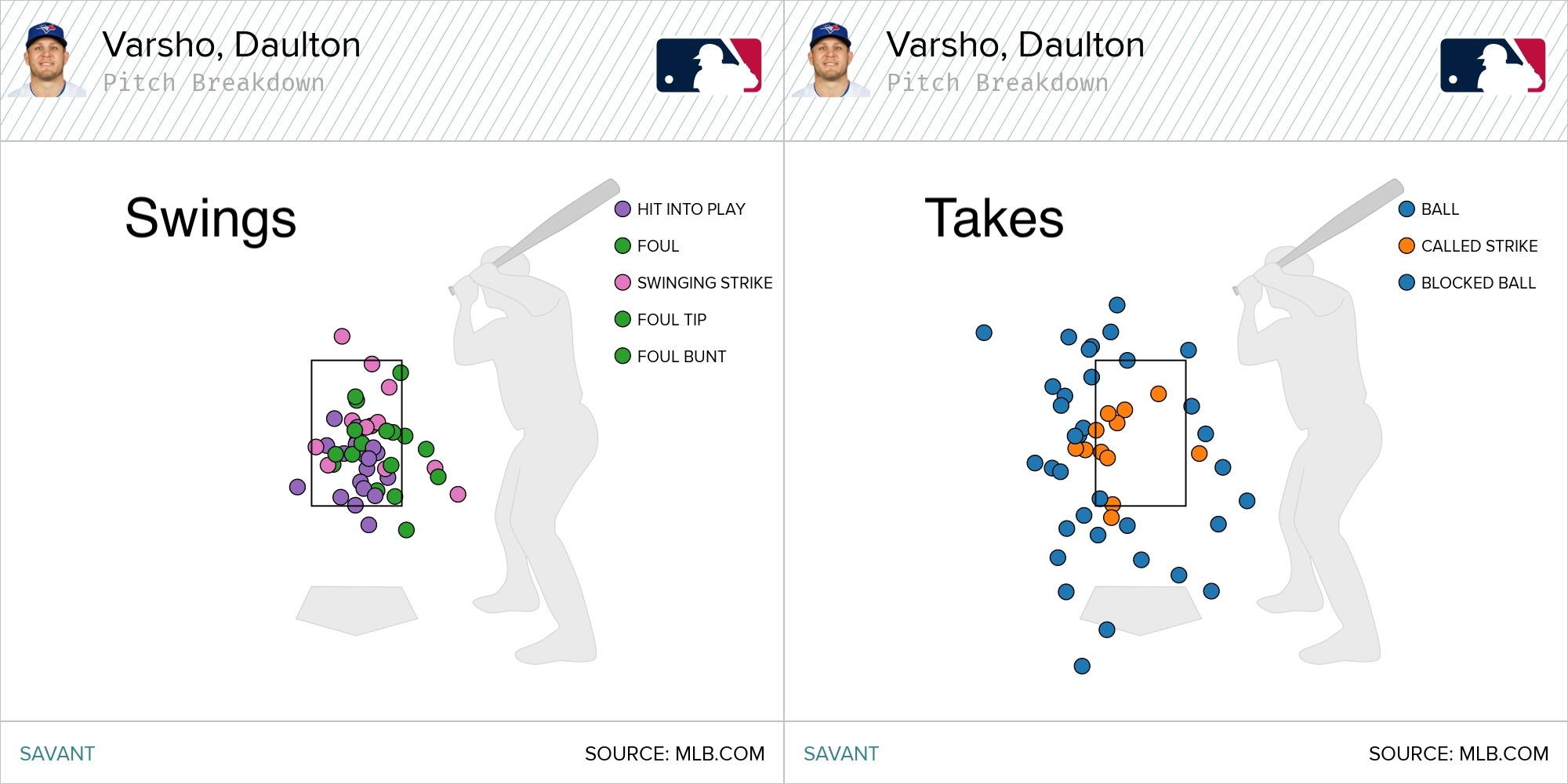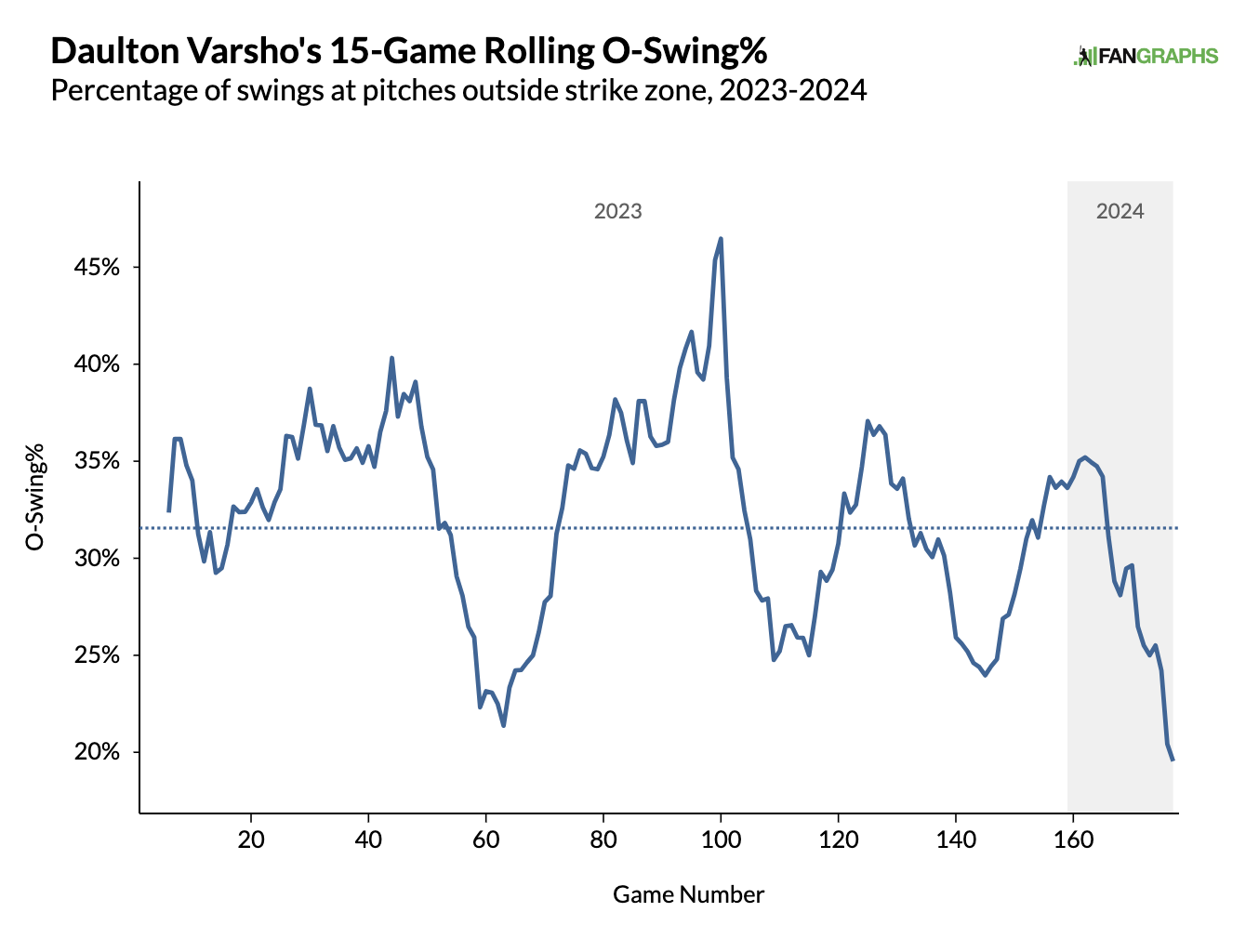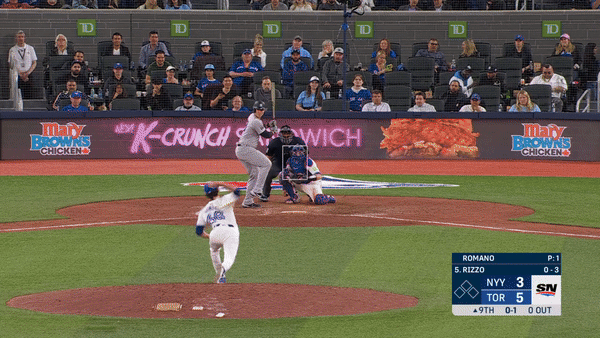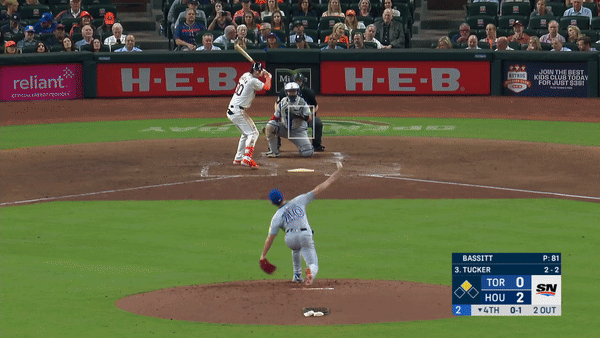TORONTO — Decent little homestand for Daulton Varsho. Over his last nine games beginning with the Toronto Blue Jays' home opener, Varsho’s hit .320/.370/.840 with a double, four homers — including his first off a left-handed pitcher since 2022 — and two walks. Of the 19 balls he put in play over that span, 12 were hit in the air and 11 carried an exit velocity over 95 mph to the pull side. In other words, he’s been getting the head out.
As is typically the case with Varsho, much of his success can be traced back to swing decisions. Throughout the homestand, he stubbornly narrowed his zone to the belt-to-knee, middle-in area where he does his best damage, while running a 7.8 per cent chase rate — second-lowest on the team to Alejandro Kirk. Here’s a look at what Varsho’s swung at and what he hasn’t over his last nine games:

Results-wise, Varsho’s 1.210 OPS on the homestand was his best of any nine-game stretch as a Blue Jay. Process-wise, Varsho’s chase rate is currently at its lowest since he joined the club:

And we can’t overlook Varsho’s defence, which has been superlative all year. He’s now tied with Julio Rodriguez for tops among MLB outfielders in outs above average, and second only to Riley Greene in defensive runs saved. Statcast gave this ball a catch probability of 25 per cent:

Incredibly, that isn’t the first time Varsho’s made that play this season. Here he is robbing Kyle Tucker of a hit in Houston exactly two weeks prior:

But let’s stick with Varsho’s offence here, as that was the biggest concern with his profile coming off Toronto’s season-opening, 10-game road trip. Varsho started nine of those games and had a miserable time at the plate, batting .133/.235/.167. Of the 22 balls he put in play, only five came off his bat over 95 mph and just eight left the infield. A third of the balls he hit in the air were pop-ups.
After enjoying immediate returns during spring training following an off-season’s work on his approach and swing path — he posted an OPS of .808 in Dunedin while running a team-high walk rate and team-low swinging-strike rate — Varsho’s productivity vanished as soon as the games began to count.
And yet, some of those process indicators remained. Varsho chased only 13 per cent of the pitches he was thrown outside the zone on that road trip, the third-lowest rate on the club following George Springer and Cavan Biggio. He averaged over four pitches per plate appearance and ran Toronto’s second-lowest whiff rate at 18.5 per cent. He wasn’t chasing, he was getting into good counts, and he was making contact. He just wasn’t making the kind of contact necessary to see results.
“Basically, I wasn't squaring up my pitch,” Varsho says. “I was just missing it.”
So, what was the roadblock between Varsho’s process and results? Turns out George Springer had the answer. He’s as close with Varsho as anyone in Toronto’s clubhouse, where their lockers sit side-by-side. He’d seen his friend go through similar cold stretches before. He’d seen the bath path inefficiency sabotaging Varsho’s contact before, too. So, on the flight to Toronto from New York at the end of that road trip, Springer sat next to Varsho and told him what he had noticed in his swing.
Varsho had developed a small tendency to bring his bat through the zone on a steep angle, causing him to pop pitches up rather than drive them on a line. Springer’s concern was that Varsho would over-correct and adjust the process that was getting him all those pitches to hit. He watched Varsho struggle mentally when he battled a similar funk early last season. And he wanted to remind him that he should have confidence in his process — that if he stayed consistent with it and amended his bat path, he’d come out of the early-season slump in a big way.
“I know Daulton very well. And I know how bad he wants to succeed,” Springer says. “So, we had a good talk about baseball on the plane. It’s about understanding the situation, developing a plan, and having the confidence to stick to it.”
Springer’s been there before. In 2015, when he was a 25-year-old just establishing himself as a big-leaguer with the Houston Astros, Springer got out to a miserable start, batting .135/.233/.162 with 16 strikeouts through his first 10 games. Every time he went to the plate, he looked up at the scoreboard and shook his head at his own numbers.
Springer responded by getting over-aggressive and chasing hits. He was running a chase rate over 30 per cent. But in his 11th game of the year, Springer drew a seven-pitch walk against C.J. Wilson in his first plate appearance and then took the left-hander deep five innings later. He doubled down on his approach from there, putting up three homers, three doubles, and eight walks over his second 10 games of the season. He finished the year with a 133 wRC+.
“It's really easy to stare at the scoreboard early in the year and think you're not doing something right,” Springer says. “But you have 50-something at-bats — you're going to have 550 to 600 more at-bats if you stay healthy. You have to keep that in perspective.
“I get it — the scoreboard, everyone likes to stare at it. But it's about your process. And if your process is right, if your work in the cage is right, if you're swinging at the right pitches, I believe that over time it'll work out. Eventually, the results you’re after will come. It's about not chasing hits early in the season.”
That message resonates with Varsho. When he struggled in 2023, he quickly sought to change elements of his swing. He added and subtracted a leg kick. He looked back over video from his college ball days at the University of Wisconsin-Milwaukee searching for ideas. He tinkered week-to-week, series-to-series, sometimes game-to-game, searching for something that would help him feel the way he wanted to at the plate.
By now you know how his 2023 ended up. So, entering 2024, Varsho made a promise to himself to stick with his approach through thick and thin, resisting the urge to tinker and adjust when faced with adverse results. Varsho’s first 10 games of the year are a classic example of the kind of stretch that would have sent him searching for a stance change or swing tweak in the past. But this year, he’s remained steadfast in trusting the process. The results over the last week and a half speak for themselves.
Still, considering the adversity he faced over the first 10 games of the season, and particularly coming off a torrid spring, was it tough for Varsho to stick with his approach?
“No, because I know that it works,” he says. “Yeah, you're going to go through those ups and downs throughout the whole season. But I want to be able to grind through it, work walks, do anything I can to help the team win that night. It’s about being able to move on and keep working for the next day.”
Approach, swing decisions, trusting process over results — these are the things that will help Varsho continue to contribute and shorten his slumps even when line drives are finding gloves or fly balls are dying at warning tracks. Even when his swing path is just a touch off, as it was during the first 10 games of the season, and he’s popping everything up.
If he keeps his zone narrow, Varsho will keep getting pitches to hit. Then it’s just up to him to execute his swing. That’s the message Springer hoped to leave him with on that flight from New York.
“Daulton’s a very good hitter, he's a very smart kid. He knows how to navigate the strike zone,” Springer says. “So, for me, that chat on the plane was just kind of being there for him. If I think I need to talk to him, I'll have that talk with him. But he knows what he has to do to be successful. And you’re starting to see it play out for him over these last few games.”







COMMENTS
When submitting content, please abide by our submission guidelines, and avoid posting profanity, personal attacks or harassment. Should you violate our submissions guidelines, we reserve the right to remove your comments and block your account. Sportsnet reserves the right to close a story’s comment section at any time.